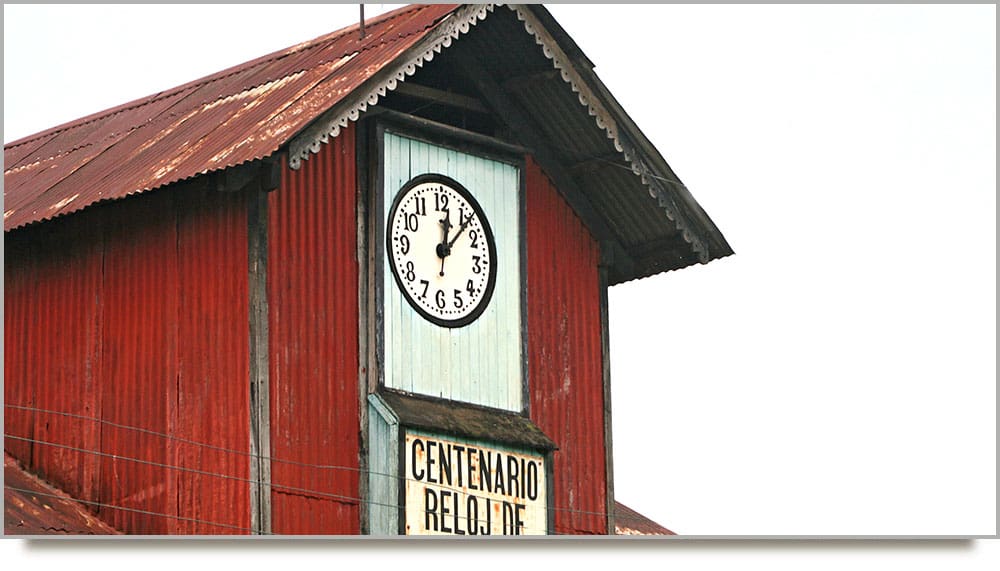
Chocolá, Seeds for a Future’s HQ, has a Multilayered History
The village of Chocolá, Guatemala, has a long and complex history, from the Pre-classic Maya period (2000 BCE to 250 CE), to the effects of colonization across Central America, to prominence in the early 20th century as producer of coffee, to today, as the community continues to seeks its forward path.
Through the centuries of the Pre-classic Maya culture, Chocolá was an important center on a trade route connecting what is now Mexico with areas and cultures to the south. During the Classic Period (roughly 250-850 CE), other cities rose in influence.
The centuries following the Classic Period eventually saw the arrival of Spanish conquistadores in the early 1500s, bringing with them fierce battles and the devastation of unfamiliar diseases, followed by generations of exploitation of Guatemala’s native people and cultures by Spanish overlords and other outsiders. This varied and challenging history has made the people of Chocolá resilient, hard-working, and with a strong sense of family. They may be a product of their history, but they aren’t trapped by it. The community continues to discover and develop.
Woven into the town's more recent history is the Seeds for a Future initiative. Today’s families are actively engaging with the Seeds for a Future Program that focuses on helping families achieve food security, better nutrition, and improved incomes.
The Chocolá Beneficio, a Key Force in the History of Coffee
Chocolá’s ancient role as a trade center is believed to have been built on cacao. For the ancient Maya, cacao not only served as money, it had many important ritual uses. Many archeologists believe the cultivation of cacao began in ancient Chocolá.
In the mid-1800s, Chocolá was again a center for innovative agricultural development and learning. A Spanish family acquired a large tract of fertile Chocolá land on which they introduced the new taste sensation -- coffee. Many methods and machines used worldwide in coffee processing today were born in the beneficio, or coffee processing plant, in Chocolá.
In the 1890s, German business interests moved into the Chocolá region and acquired the Spanish plantation, now known as Finca Chocolá. They built one of the most successful coffee operations in Central America. During World War II, the Guatemalan government expropriated German businesses, including Finca Chocolá. In the 1980s, in the name of land reform, the government authorized an Empresa Campesina Asociativa (ECA) -- a co-operative to own and operate the coffee business of each expropriated plantation or finca.
The beneficio was the heart of Finca Chocolá during its heyday in the development of the coffee industry worldwide. Constructed in the late 1800s and early 1900s, the Beneficio complex included an Administration building, office building, hotel for visiting businessmen and dignitaries, a sawmill and an extensive machine shop.
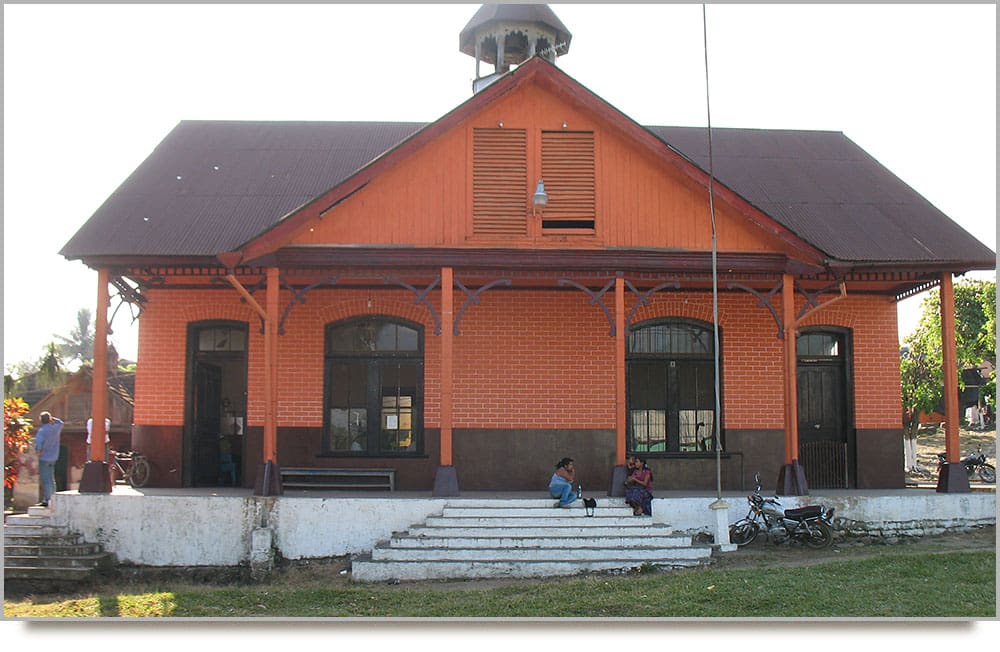
Built over 120 years ago, the Administration Building is still in use today.
Today, Chocolá’s coffee families struggle.
Coffee is now a worldwide business and has moved beyond the innovations and renown of the early days of Finca Chocola. The altitude is too low here to grow high-quality, high-value specialty coffee, so earnings are low.
Generations of Chocolenses devoted their lives to growing coffee. Many will continue do so, honoring the legacy of their fathers and grandfathers, but while coffee still holds a place in their hearts, we encourage them to find space for new crops and a productive backyard farm.
The Seeds for a Future program encourages self-reliance, helping families realize they can build better futures for themselves and their communities, with better nutrition, more reliable access to food, and improved household income.
As the value of coffee grown in Chocolá has diminished, and its role in the community’s economy has faded, ECA Chocolá has stayed in operation mainly by renting the benefico to a series of operators from outside the community. This has not always been a happy arrangement -- some operators have even refused to buy and process the local crop. And as may be seen from the photographs below, the rental contracts have required little in the way of maintenance, and the historic buildings have suffered.
Nevertheless, while some of the buildings have fallen into disuse, others remain a testament to the history and resilience of the people of Chocolá.
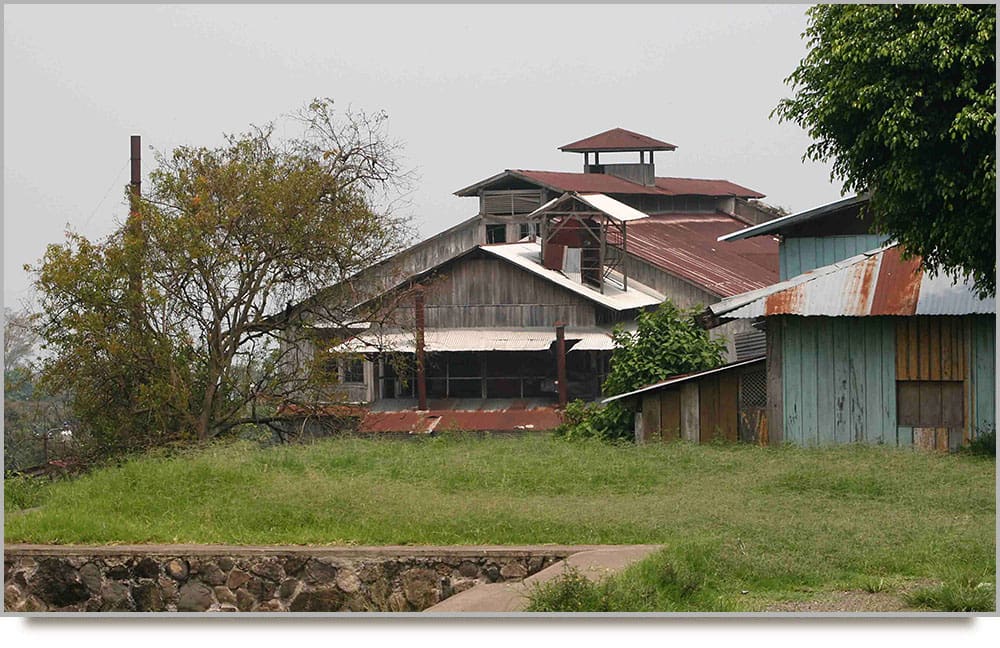
Use of Waterpower in the Beneficio.
The dormant San Pedro volcano (9,900 ft.) towers above Chocolá on a Pacific-facing western slope. Its presence contributes to the staggering rainfall that feeds into the Chocolá River. The entire beneficio complex was designed to take advantage of gravity and waterpower.
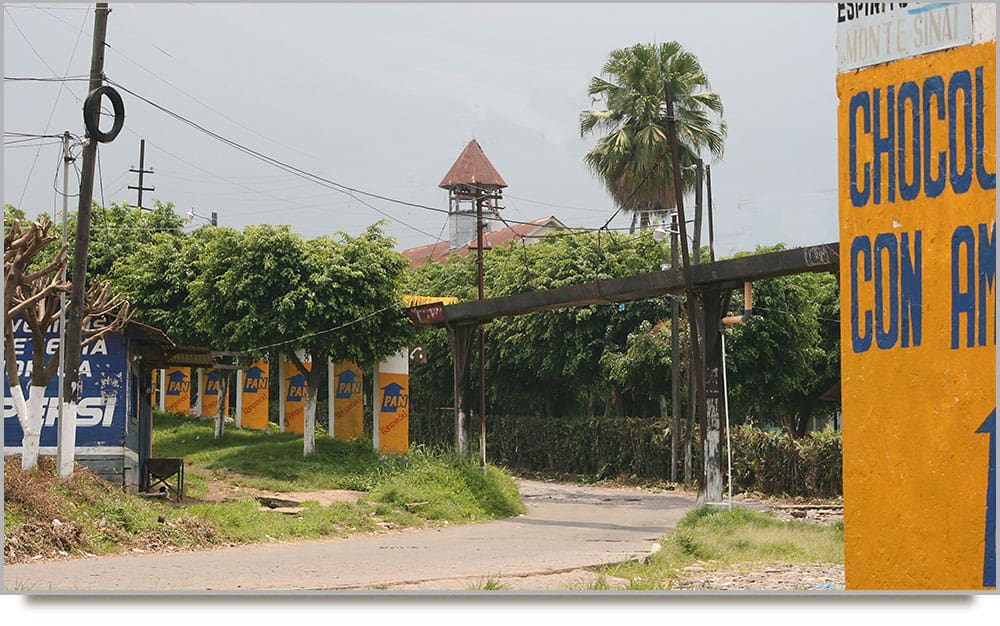
The road entering Chocolá passes beneath the aqueduct.
Concrete and iron channels from diversion dams far about the beneficio delivered water to a two-story tall waterwheel. The wheel drove an axle that delivered power to a large machine shop, lumber mill and equipment garage.
The machine shop manufactured roofing tiles and metal appliances for construction projects.
The sawmill could produce wooden posts and lintels as large as 8”x8” of very hard rainforest woods from trees which grew in abundance in the region.
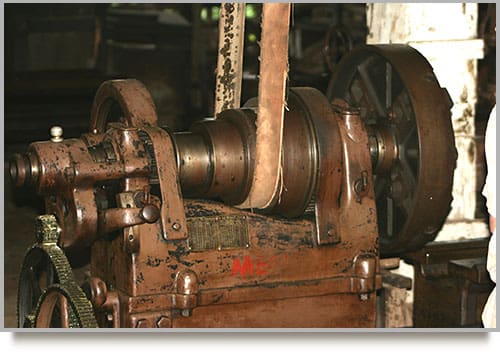
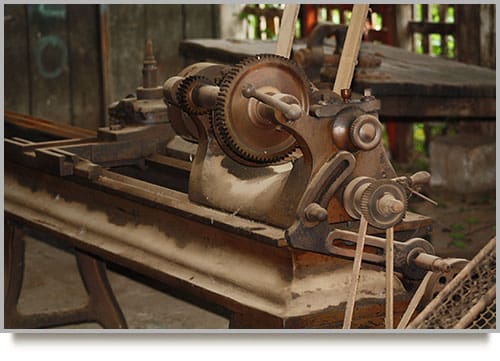
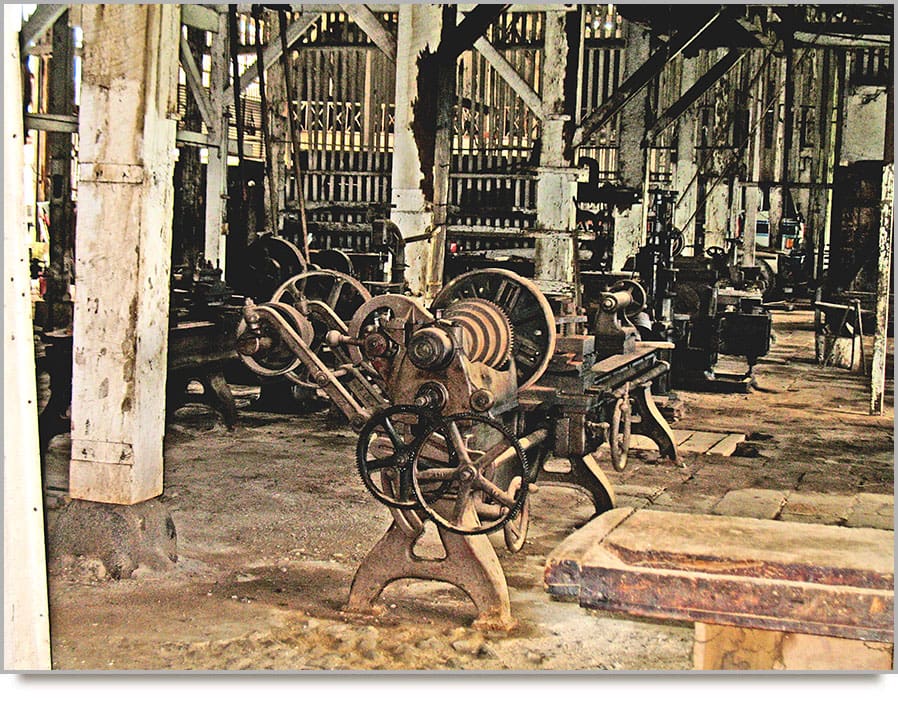
The water then passed underground to the coffee processing plant, where it was used in washing and fermenting the cacao beans and powering more machines, including enormous rotating drying ovens – Guardiola Machines, invented in Chocolá in 1872 by Jose Guardiola. At least one of the original Guardiola ovens is still operating in Chocolá, and modern versions are used worldwide in coffee processing today.
The famous Centennial Clock dates from 1895 and still tells time for the community today. It too is operated using a hydraulic system – the gears are turned by a carefully regulated water flow, and water is also used to ring the bell that marks each hour.
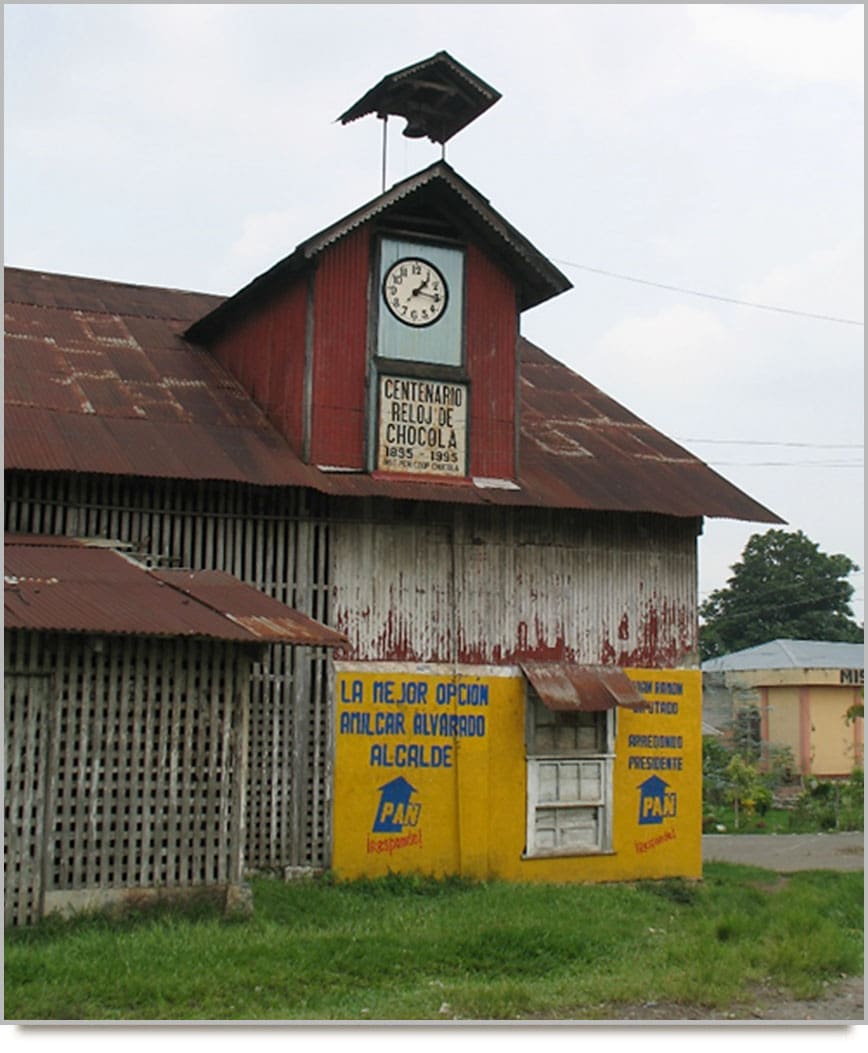
The remaining water is then piped further down the mountain to a generator that provided electricity to the homes of company top brass. Finally, the water re-entered the riverbed and flowed toward the ocean.
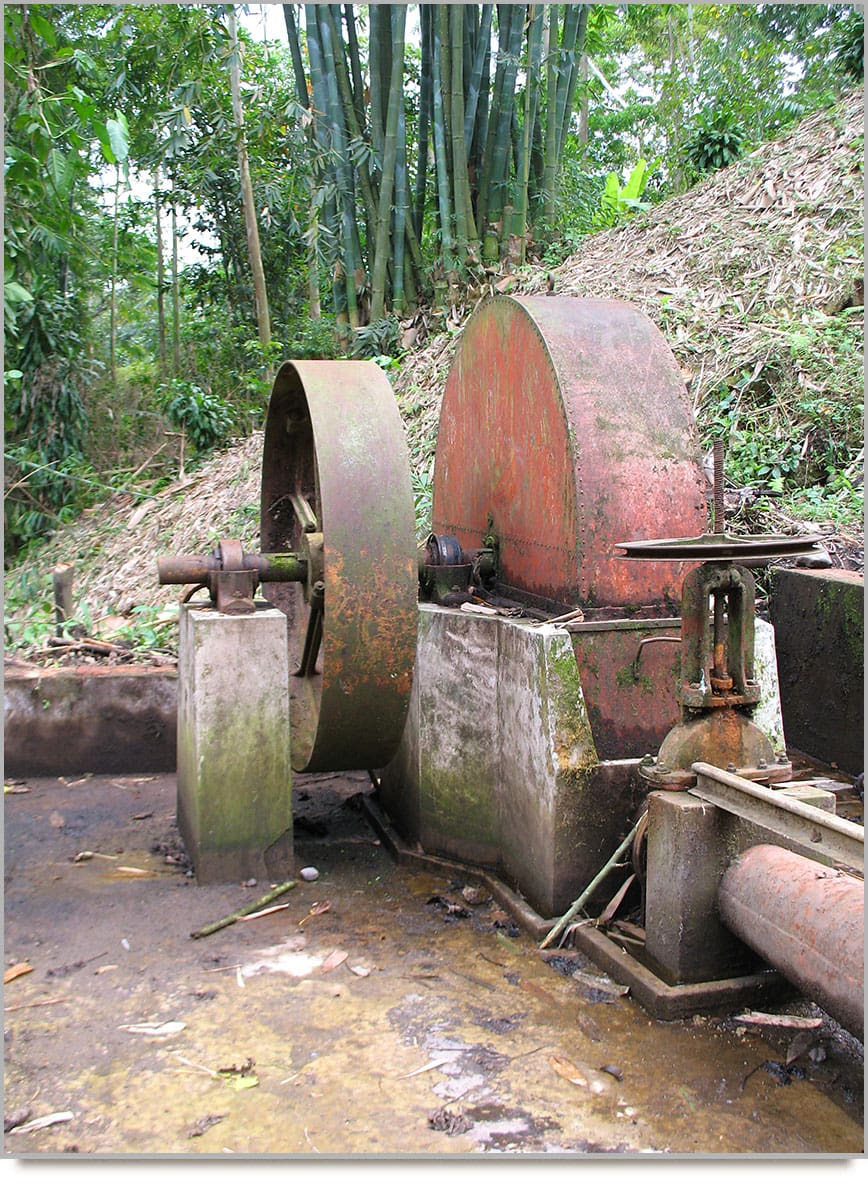
By Earl de Berge

